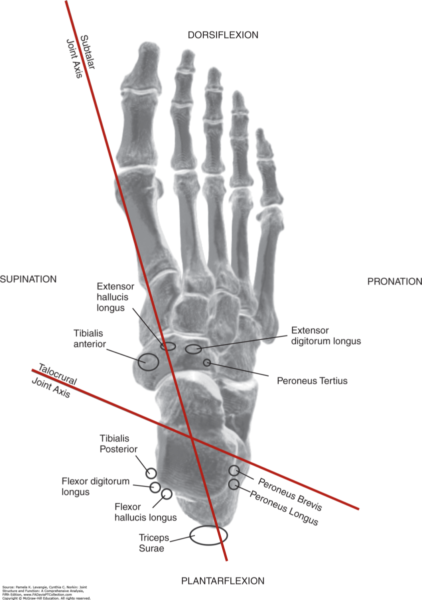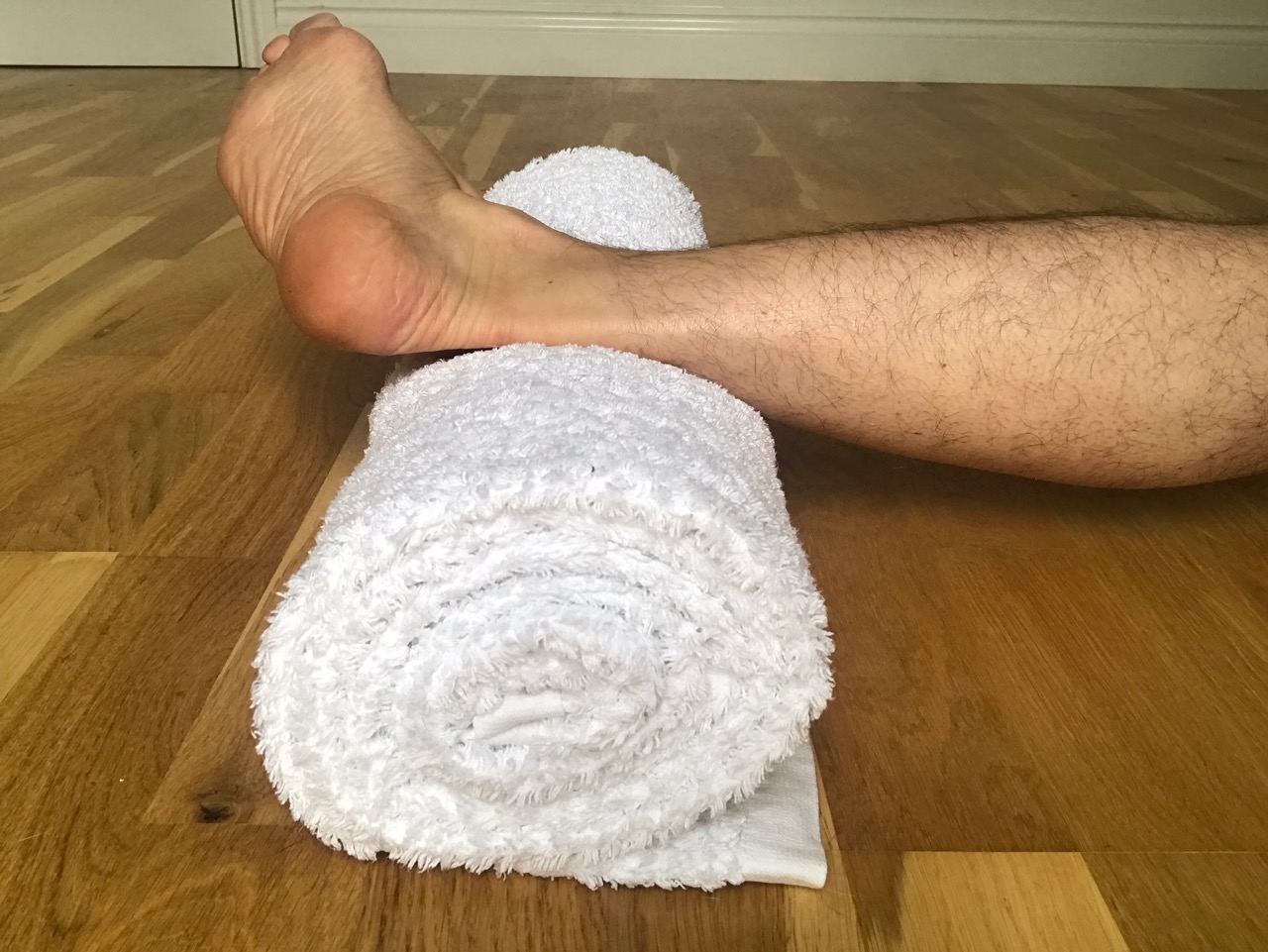In this post we discuss why subtalar joint motion is critical to walking and running and look at two exercises to help you improve it.

At a glance
Most rehab programmes ignore the foot and ankle, especially the subtalar joint.
It drives pronation (shock absorption) and supination (forward propulsion) in walking and running.
Restricted motion here limits force absorption and can cause pain or injury further up the chain.
The issue is usually muscle function, not a joint block.
Train pronation and supination with a controlled side-lying exercise.
Better subtalar motion = smoother gait, fewer injuries, stronger performance.
Introduction
In an integrated system, the performance of the whole is only as good as the function of its individual parts.
Whilst some exercise and rehab programmes will assess motion at the larger joints in the body, not many will look at foot and ankle motion.
This is a mistake and can lead to inferior results. Especially if there are restrictions at one joint in particular, the subtalar joint.
The subtalar joint

The subtalar joint is formed between the calcaneus (heel bone) and the talus. The talus sits on top of the calcaneus and supports the weight of the tibia (lower leg bone).
No muscles attach to the talus itself, it relies entirely on its articulations with other bones for movement. More than half of its surface is covered in hyaline cartilage to allow for frictionless motion.
The axis of the subtalar joint doesn’t conform to any one of the cardinal planes. It actually moves in all three so is considered triplanar.
Look down at your foot and draw an imaginary line between the tip of your big toe and the outside of your heel. This will give you a rough indication where the joint’s axis is located.
Essentially its motion can be described as pronation and supination. Each of these describe not just one movement however, but a combination.
Pronation at the subtalar joint
Pronation at the subtalar joint is a combination of the following:
Eversion – elevation of the outside border of the foot.
Abduction – outward rotation of the foot.
Dorsiflexion – the top of the foot moving towards the front of the lower leg.
Supination at the subtalar joint
Supination at the subtalar joint is a combination of these motions:
Inversion – elevation of the inside border of the foot.
Adduction – inward rotation of the foot.
Plantarflexion – the top of the foot moving away from the front of the lower leg.
This video illustrates motion at the ankle joint and the subtalar joint and will help you picture how both work together.
Why is subtalar motion so important?
Human movement, particularly in walking and running gait is a continuous cycle of pronation and supination.
Pronation is how your body absorbs the forces that result from your foot hitting the ground. Supination is how it translates those forces into forward motion.
Pronation during gait
When your foot contacts the floor, a series of predictable movements take place that help to dissipate the forces involved.
It all begins with your subtalar joint moving into pronation.
This unlocks the foot and causes your medial arch to collapse towards the ground, enabling your foot to mould to whatever surface it finds itself on.
At the same time your lower leg is driven into internal rotation, which in turn causes internal rotation of your hip and motion of your trunk to the opposite direction.
If your subtalar joint is unable to pronate, every single one of these motions is compromised. As a result, so is your ability to absorb force.
This may cause any number of issues, either at the foot itself or higher up. This is particularly true if you’re involved in activities that result in significant ground reaction forces such as running and jumping.
Supination during gait
As you move over your stationary foot this provokes the opposite series of motions known as supination.
Your heel lifts as your opposite leg swings forward and your subtalar joint now begins to supinate. This causes external rotation of your lower leg and hip, and trunk motion to the opposite side.
If for some reason your subtalar joint is unable to move into pronation, its ability to supinate may also be compromised.
This is because pronation loads the plantar fascia of the foot, energy which is stored and then released as you toe off in normal walking gait.
This ingenious system is known as the windlass mechanism. It reduces the energy cost of walking and enables us to cover long distances with minimal effort.
How to improve subtalar motion
A quick look online will show you plenty of manual therapy techniques for improving subtalar motion. This presumes that restrictions in range of motion are due to a physical block within the joint itself. Whilst this is possible, without the presence of pain, it’s extremely unlikely.
Even if that were the case, the value of forcing a joint into positions it doesn’t want to go is questionable.
When we see restrictions at other joints, we don’t first presume that there’s an issue with the joint itself. Instead we look at improving the function of the muscles that move the joint.
The imaginary axis that we drew earlier from your big toe to the outside of your heel, will give us an indication which muscles have an influence on both pronation and supination of the subtalar joint.

Everything on the lateral aspect will move the joint into pronation, whilst everything on the inside is responsible for supination.
To challenge either motion without equipment, you’ll need to lay on your side with your ankle resting on an object that allows your foot to move towards the ground.
A rolled up towel will suffice, or if you have one available a foam roller works well.
Let’s work on subtalar joint pronation first.
Exercise to improve subtalar joint pronation

Lay on your side with the inside of your ankle placed on a rolled up towel or similar. Curl your ankle around the towel so the inside of your heel travels towards the floor.
When it can’t go any further, start to bring the outside of your heel back up towards the outside of your shin. Hold the top position for a second or two before slowly lowering your foot back down towards the floor.
Remember that subtalar joint pronation involves ankle dorsiflexion, so it’s normal for your foot to come closer to the front of your shin as you lift it away from the floor.
Focus on the muscles at the side of your shin working as you come up into the top position. With each repetition try to bring the outside of your heel as close as possible to the outside of your shin.
Note that a 2:1 ratio of supination to pronation is considered normal. So don’t be concerned if this exercise feels more limited than the next.
Exercise to improve subtalar joint supination

Now reverse the position on the towel so the outside of your ankle is now supported.
This time curl the outside of your ankle around the towel so the outside of your heel travels towards the floor. When you can’t go any further, focus on bringing the inside of your heel up towards the inside of your shin.
You’ll notice that as you do this your ankle will naturally plantarflex (the top of your foot will move away from the front of your shin). This is normal and part of subtalar joint supination as we discovered earlier.
Hold the top position for a second or two before slowly releasing your foot back to the start position.
Summary
Subtalar joint motion is critical to both walking and running.
A loss of motion at this joint can result in a wide variety of issues, both at the foot and ankle and further up the leg.
Use these exercises to both assess subtalar joint motion and improve it.